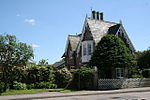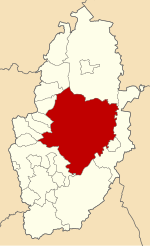The Minster School, Southwell
Academies in NottinghamshireChoir schools in EnglandChurch of England secondary schools in the Diocese of Southwell and NottinghamPrimary schools in NottinghamshireSecondary schools in Nottinghamshire ... and 2 more
Southwell, NottinghamshireUse British English from February 2023
The Minster School is a Church of England secondary school with sixth form in Southwell, Nottinghamshire, England, for children aged 11 to 18. There are approximately 1600 students on roll. It has a small selective junior section (8 years- 11 years) for boy and girl choristers from Southwell Minster and other pupils chosen for their musical ability. It has a smaller than average proportion of pupils on free school meals, or of ethnic minority origin or with Statement of Special Educational Needs.In December 2011 the School was graded Outstanding by Ofsted, in 30 out of 31 areas.
Excerpt from the Wikipedia article The Minster School, Southwell (License: CC BY-SA 3.0, Authors).The Minster School, Southwell
Nottingham Road, Nottingham
Geographical coordinates (GPS) Address Phone number Website External links Nearby Places Show on map
Geographical coordinates (GPS)
| Latitude | Longitude |
|---|---|
| N 53.0724 ° | E -0.9579 ° |
Address
The Minster School
Nottingham Road
NG25 0LG Nottingham
England, United Kingdom
Open on Google Maps










